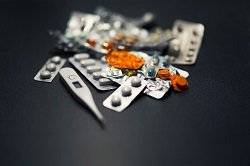The Novartis decision of the Indian Supreme Court rejecting patentability of the cancer drug, Imatinib Mesylate in its beta crystalline form (commonly called ‘Glivac’), has been commended for its outlook on public interest and access to health. It was in fact an important decision for cancer patients as it removes the last possible hurdle to access the drug at one-tenth of its cost, which was around Rs. 1, 20, 000/- per month. The main issue in the case revolved around Section 3(d) of the Indian Patents Act, which prohibits patents on new forms of a known substance unless enhanced efficacy is shown. Stating that enhanced efficacy for pharmaceutical substances means therapeutic efficacy, the Court pointed out that specific properties of a form cannot be considered for assessment unless they show objective and enhanced therapeutic effect in treating a disease.
Application of Section 3(d), though it primarily relates to pharmaceutical and chemical inventions as elucidated by the Novartis case, cannot be limited to only such inventions, and extends to other inventions as well. One field of inventions that have been the subject of patent controversy and debate in the recent past is genetics and genetic engineering. The breast cancer patent case, which is now pending before the US Supreme Court has brought forth a range of public policy issues with respect to the patentability of genes ranging from the applicability of product of nature doctrine to health care access.
Isolated sequences, both gDNA, naturally existing DNA sequences, and cDNA, products of reverse transcription, have passed the muster of patentability in India. About 393 cDNA patents and 74 gDNA patents have been granted in India so far and 1203 cDNA applications and 364 gDNA applications have been published as of 8th May 2013. In India, both cDNA and gDNA sequences are not considered as products of nature, which is a common roadblock for gene sequence patents in other countries. Not surprisingly, most of the top ten filers of gene sequence patents in India are multi-national corporations, including the likes of Hoffmann-La Roche, Merck, Eli Lilly, and Novartis as well. Considering the fact that gene sequence patents have a direct correlation with health care, especially diagnosis, as learned from the breast cancer patent case, it is easy to draw parallels between pharmaceutical substances and genetic substances for purposes of patent analysis.
Like in the Novartis case, where the cancer drug was priced highly, the breast cancer test was also priced highly by Myriad Genetics, the patent holder, making it inaccessible to the needy. The fact that gene sequences are substances having pharmaceutical applications makes them susceptible to Section 3(d) inquiry like chemical compounds. More often than not, the invention with respect to gene sequences, other than of course identifying the exact sequence, is finding its function. As the entire sequence already exists in the human body or in the human genome libraries, gDNA sequences may be considered as the same forms and cDNA sequences may be considered as new forms as they lack introns (non-coding regions) when compared with their natural counterparts. Now, the cDNA sequences to pass the test of Section 3(d) must possess enhanced efficacy in performing their function, which is obviously not possible. To put it in simple terms, cDNA sequences when compared with their natural counterparts possess either the same or less efficacy in performing their function and never more. Taking this a step forward, if a protein is made using recombinant DNA technology, that protein would also be the same as the naturally extracted protein except, maybe in purity. Such a substance would never be able to pass the test of therapeutic efficacy as postulated by the Supreme Court.
Where does that leave genetic inventions? Either they are exempted from the scope of Section 3(d) by limiting the section to chemical inventions or bring them within the scope of the section but provide specific exceptions based on the nature of inventions through court decisions. The second approach is too complicated for a non-patent-friendly judiciary and the first would open India up for TRIPs compliance challenges. What then is the fate of genetic, biotechnology, and other inventions in the light of Section 3(d)?



